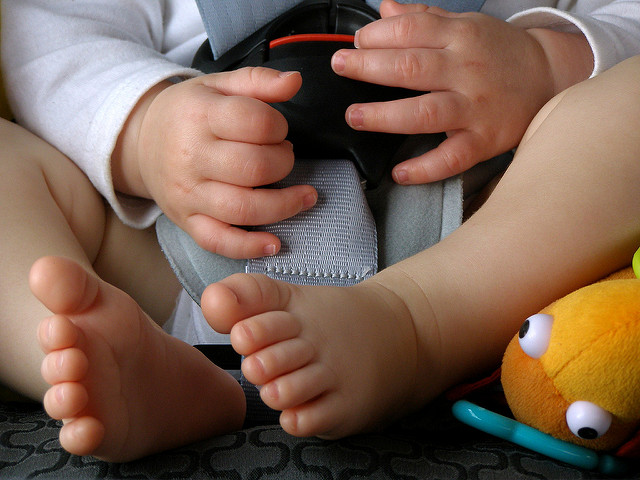 Car crashes are the leading cause of death for young children. Car seats are designed to reduce injury and death in the case of an accident. Recently, recommendations have changed as to how long your child should remain in a rear-facing seat.
Car crashes are the leading cause of death for young children. Car seats are designed to reduce injury and death in the case of an accident. Recently, recommendations have changed as to how long your child should remain in a rear-facing seat.
Previously, rear-facing seats were reserved for infants. In 2011, recommendations were extended until the age of two. The American Academy of Pediatrics (AAP) in August 2018 changed these guidelines.
Parents often look forward to switching their children to front-facing seats so they can view them in their rearview mirrors and offer entertainment and snacks. Now experts recommend you keep your child in a rear-facing seat for as long as possible following manufacturers’ guidelines. [note]https://www.healthychildren.org/English/safety-prevention/on-the-go/Pages/Car-Safety-Seat-Checkup.aspx[/note]
According to the new AAP evidence-based guidelines, which will be published in the November 2018 issue of Pediatrics:
Guidance for families
Pediatricians should be prepared to provide advice at every health maintenance visit to ensure that children are as safe as possible. The evidence-based recommendations call for the following:
- Children should ride in a rear-facing car safety seat as long as possible, up to the limits of their car safety seat. This will include virtually all children under 2 years of age and most children up to age 4.
- Once they have been turned around, children should remain in a forward-facing car safety seat up to that seat’s weight and length limits. Most seats can accommodate children up to 60 pounds or more.
- When they exceed these limits, child passengers should ride in a belt-positioning booster seat until they can use a seat belt that fits correctly.
- Once they exceed the booster limits and are large enough to use the vehicle seat belt alone, they should always use a lap and shoulder belt.
- All children younger than 13 years should be restrained in the rear seats of vehicles for optimal protection. [note]http://www.aappublications.org/news/2018/08/30/passengersafety083018[/note]
Even if your child’s legs are too long to remain in the rear-facing seat, experts say it is safer for them to bend or fold their legs than to switch to front-facing. The reason is to protect your child’s head and neck. Research suggests the new guidelines will prevent 70% of injuries and deaths. [note]https://www.cbsnews.com/news/rear-facing-car-seats-kids-age-new-guidelines-for-parents-children/[/note]
Given the new recommendations, we may see manufacturers building rear-facing car seats to accommodate larger children. Search for car seats that include the upper limits for children’s weight and height. Not only will this save you money by buying a seat that will last for many years, but also it will also keep your child safe.
Furthermore, there are child safety seats designed for children that are overweight or obese, which accounts for 34% of American children. [note]http://pediatrics.aappublications.org/content/early/2018/08/28/peds.2018-2461[/note] These seats can be used with children of typical weight too. For example, the Clek Fllo Convertible Baby and Toddler Car Seat will allow your child to remain rear-facing up to 50 pounds.
Convertible seats will allow you to switch from rear to front facing when your child reaches the maximum limits. Most set the maximum weight for rear-facing at 40 pounds and front-facing 65 pounds. The average four-year-old weighs 40 pounds. [note]https://kidshealth.org/en/parents/growth-4-to-5.html[/note]
It is important when purchasing a new car seat that you allow it to off-gas before using. Car seats contain many toxic materials, like flame retardants. Plus, bucket style infant seats are not essential.
No longer is the age of two considered a milestone for car sweat direction. Children should remain rear-facing for as long as possible according to these new recommendations. These are already the recommendations in Sweden, where children switch directly from rear-facing to a booster seat. This practice has reduced “significant injuries” by 90% in car crashes. [note]http://pediatrics.aappublications.org/content/early/2018/08/28/peds.2018-2461[/note]
Image: Jim Champion on Flickr Some rights reserved
Leave a Reply